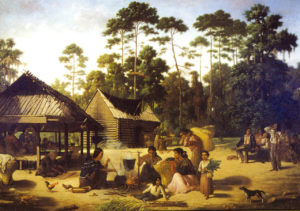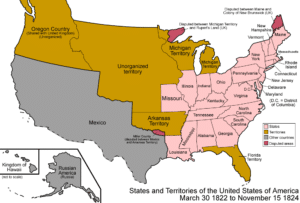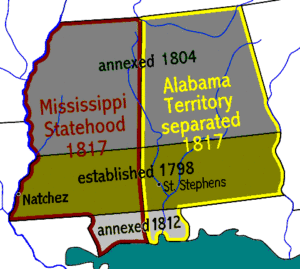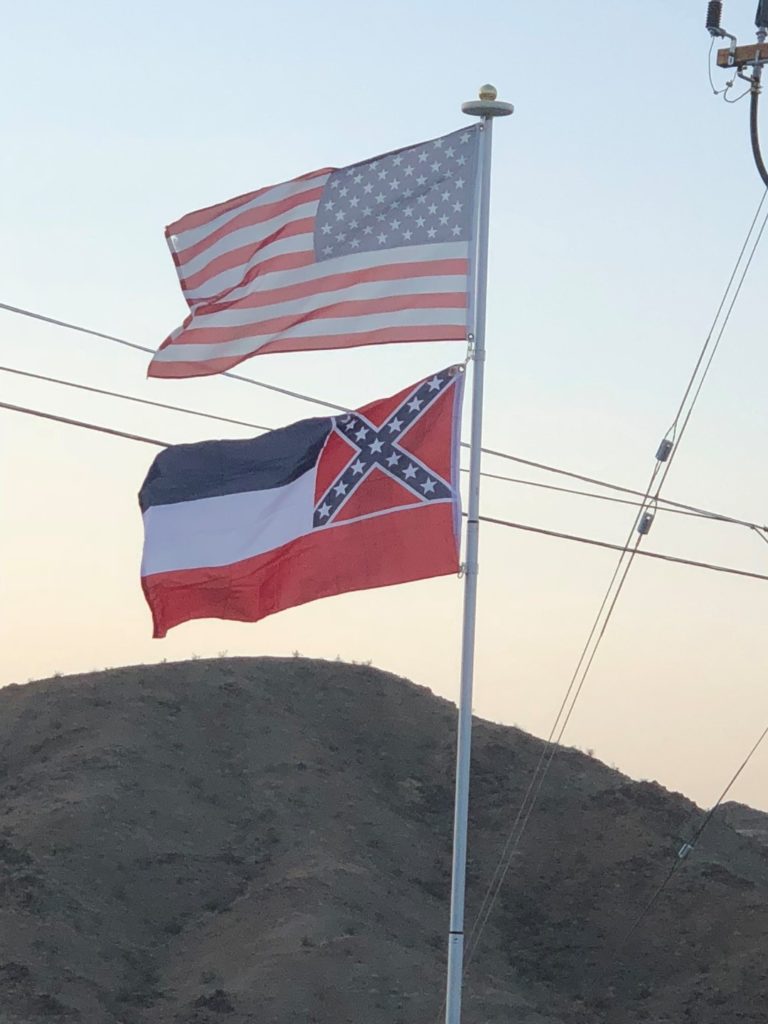
The first major European expedition into the territory that became Mississippi was that of the Spanish explorer, Hernando de Soto, who passed through the northeast part of the state in 1540, in his second expedition to the New World.
Colonia Era:
In April 1699, French colonists established the first European settlement at Fort Maurepas, built in the vicinity of present-day Ocean Springs on the Gulf Coast. It was settled by Pierre Le Moyne d’Iberville. In 1716, the French founded Natchez on the Mississippi River (as Fort Rosalie); it became the dominant town and trading post of the area. The French called the greater territory “New France”; the Spanish continued to claim part of the Gulf coast area (east of Mobile Bay) of present-day southern Alabama, in addition to the entire area of present-day Florida.

Through the 18th century, the area was ruled variously by Spanish, French, and British colonial governments. After Great Britain’s victory in the French and Indian War (Seven Years’ War), the French surrendered the Mississippi area to them under the terms of the Treaty of Paris (1763). They also ceded their areas to the north that were east of the Mississippi River, including the Illinois Country and Quebec. After the Peace of Paris (1783), the lower third of Mississippi came under Spanish rule as part of West Florida. In 1819 the United States completed the purchase of West Florida and all of East Florida in the Adams–Onís Treaty, and in 1822 both were merged into the Florida Territory.

Mississippi Territory:
After the American Revolution, Britain ceded this area to the new United States of America. The Mississippi Territory was organized on April 7, 1798, from territory ceded by Georgia and South Carolina to the United States. Their original colonial charters theoretically extended west to the Pacific Ocean. The Mississippi Territory was later twice expanded to include disputed territory claimed by both the United States and Spain.

From 1800 to about 1830, the United States purchased some lands through the Treaty of Doak’s Stand, from Native American tribes for new settlements of European Americans. On September 27, 1830, the Treaty of Dancing Rabbit Creek was signed between the U.S. Government and the Choctaw. The Choctaw agreed to sell their traditional homelands in Mississippi and Alabama, for compensation and removal to reservations in Indian Territory, now Oklahoma. Federally recognized tribes include the Mississippi Band of Choctaw Indians.
Statehood:
On December 10, 1817, Mississippi was the 20th state admitted to the Union.
Plantations were developed primarily along the major rivers, where the waterfront provided access to the major transportation routes. This is also where early towns developed, linked by the steamboats that carried commercial products and crops to markets.
When cotton was king during the 1850s, Mississippi plantation owners, especially those of the Delta and Black Belt central regions, became wealthy due to the high fertility of the soil, the high price of cotton on the international market, and free labor gained through their enslavement of African peoples.
Civil War:
On January 9, 1861, Mississippi became the second state to declare its secession from the Union, and it was one of the founding members of the Confederate States. The first six states to secede were those with the highest number of slaves. During the war, Union and Confederate forces struggled for dominance on the Mississippi River, critical to supply routes and commerce. More than 80,000 Mississippians fought in the Civil War, and casualties were extremely heavy. Union General Ulysses S. Grant‘s long siege of Vicksburg finally gained the Union control of the river in 1863.
